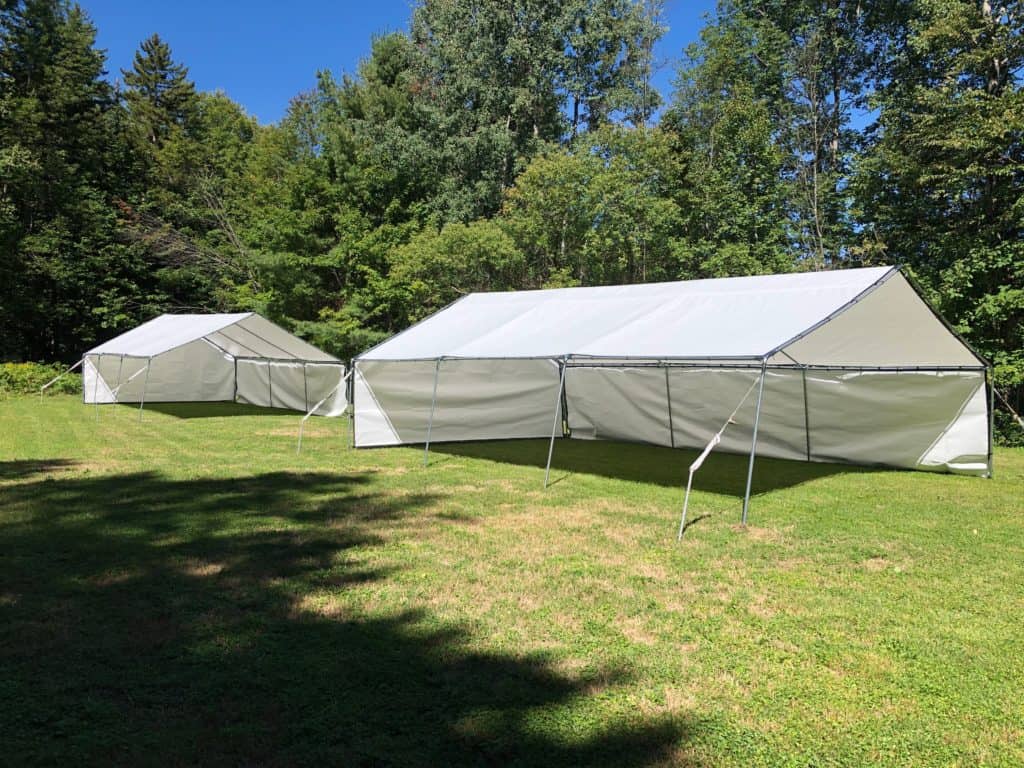
Local schools see significant increase in registration numbers
By Polly Mikula
Vermont’s K-12 students returned to school on Tuesday, Sept. 8, for the first time since March 15 when the governor ordered schools to close to in-person instruction. Reopening schools has been the subject of widespread debate, however, and specific plans have sparked unique challenges and solutions that vary widely across districts.
“There is no playbook for this,” Gov. Phil Scott said at the news conference Friday, Sept. 4.
Enrollment
While some initially feared that students would choose not to come back for in-person instruction during the pandemic— based on the result of parent surveys in July that showed up to 15% would likely keep their children home — local schools now may find themselves stretching capacity.
At the most recent Windsor Central Supervisory Union board meeting in August, the district reported an increase of 177 students registered across the district’s four elementary schools plus the middle school/high school. At Killington Elementary School there are 127 students enrolled this year, according to Jim Haff, Killington Selectman and district school board member. “That’s over 20 more kids than last year, I think — a significant increase.”
There were 1,005 total students in the district last year.
“The numbers are still a bit unknown,” Haff cautioned. “We’re trying to get clarity on the exact enrollments now and should be able to know that soon.”
Students in the WCUUSD are given the choice to enroll fully remotely, if they choose, and many districts statewide have adopted similar protocol, but not all.
The number of equalized pupils enrolled in the district’s schools will have a significant effect on the money allocated by the state for the district to run the school. Giving parents and students the option to attend public school fully remotely, if they felt uncomfortable attending in-person, was seen as a way to support individuals health and safety choices while keeping the students enrolled in the local school system.
Despite these efforts, the state has also seen a significant increase in homeschool applications — 100% increase over last year, state officials reported at the Sept. 4 news conference. According to the Agency of Education, 1,634 families had filed paperwork with the state by July 15 to enroll in homeschooling for the upcoming year. (Ted Fisher, a spokesperson for the agency, cautioned that the final numbers would likely change, but it’s anyone’s guess whether those figures will increase or decrease in these unpredictable times.)
Problem solving
Most schools have also implemented now universally familiar safety protocols — plexiglass in high-traffic areas, temperature checks, masks, hand-sanitizer, wipes and lots of soap. But with transmission of the virus apparently significantly reduced outside, some teachers and administrators are also turning to an already popular practice in many schools: education outdoors. White River Valley School in Bethel plans to hold in-person instruction outside most of the day, every day, until at least Thanksgiving break.
In WCUUSD two tents have been set up outside each of the four elementary schools (Barnard, Killington, Reading, Woodstock) and six outside the middle school/high school — at a cost of around $20,000.
The move outside also solves a common concern about air ventilation. WCUUSD schools, as well as many schools around the state, are worried about whether obsolete air-handling systems could spread the coronavirus, and are planning urgent projects. When the pandemic made HVAC systems a top priority, legislators set up a $6.5 million grant program to help schools repair and upgrade their heating, ventilation, and air conditioning systems to meet Covid-19 health guidelines. About 300 schools are interested in applying for grants, said Jody Lesko, the director of programs and implementation. That’s about three-fourths of all schools in Vermont.
An engineering firm working with about 20 schools says project costs often run $40,000 to $60,000, which leaves the $6.5 million paying for less than half the projects submitted.
Virtual Learning ramps up
To help schools meet the demand for remote learning without hiring an avalanche of new teachers, the Vermont Virtual Learning Cooperative is scaling up. The online school, based at the River Valley Technical Center in Springfield, will create a pool of educators who want to teach all their courses online. Jeff Renard, principal of the cooperative, said in mid-August that he expects about half of all Vermont school districts to participate.
Hub sites created for school-age childcare
Just weeks before the first day of school, the state announced a plan to build a new system of child care hubs to serve school-age children on remote learning days. As of Sept. 1, the state was in the final stages of approving 12 hub sites in eight counties — three each in Addison and Chittenden, and one each in Franklin, Lamoille, Rutland, Washington, Windham, and Windsor. In the pipeline are 20 more applications for hubs. Human Services Secretary Mike Smith called the effort “a herculean task” but one that is necessary for both students to get the education and care needed to succeed in school and for parents, many of whom are trying to simultaneously juggle full time jobs.
Lola Duffort contributed to this report.




